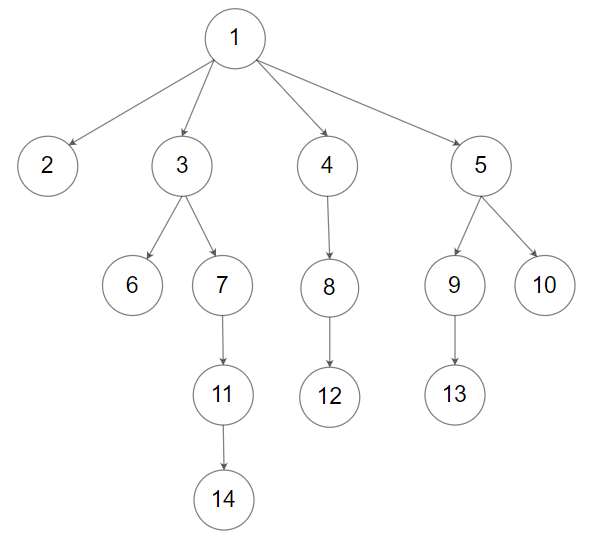Given an n-ary tree, return the level order traversal of its nodes' values.
Nary-Tree input serialization is represented in their level order traversal, each group of children is separated by the null value (See examples).
Example 1:

Input: root = [1,null,3,2,4,null,5,6] Output: [[1],[3,2,4],[5,6]]
Example 2:

Input: root = [1,null,2,3,4,5,null,null,6,7,null,8,null,9,10,null,null,11,null,12,null,13,null,null,14] Output: [[1],[2,3,4,5],[6,7,8,9,10],[11,12,13],[14]]
Constraints:
- The height of the n-ary tree is less than or equal to
1000 - The total number of nodes is between
[0, 10^4]
A:
/* // Definition for a Node. class Node { public: int val; vector<Node*> children; Node() {} Node(int _val) { val = _val; } Node(int _val, vector<Node*> _children) { val = _val; children = _children; } }; */ class Solution { public: vector<vector<int>> levelOrder(Node* root) { vector<vector<int>> res; vector<Node*> curLevel; if(root){ curLevel.push_back(root); res.push_back(vector<int>{root->val}); } while(not curLevel.empty()){ vector<Node*> next; vector<int> nextLevel; for(int i =0;i<curLevel.size();i++){ auto ptr = curLevel[i]; for(auto & tmp : ptr->children){ next.push_back(tmp); nextLevel.push_back(tmp->val); } } if(not nextLevel.empty()) res.push_back(nextLevel); curLevel = next; } return res; } };
Error:
最后忘了检查nextLevel是否为空。 TNND
No comments:
Post a Comment